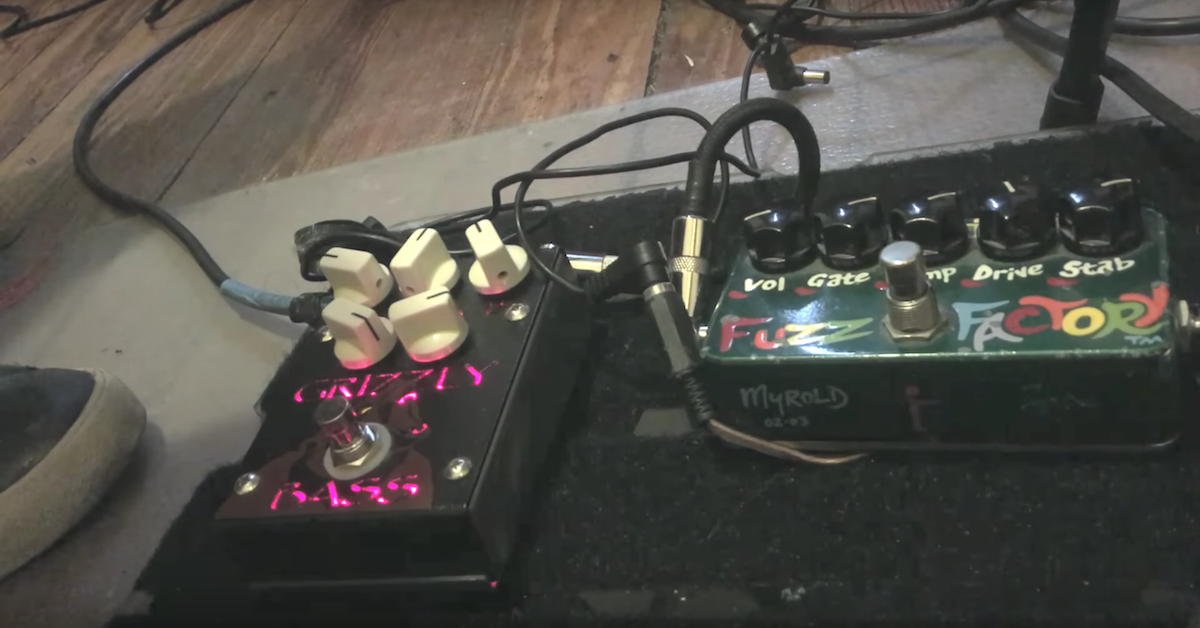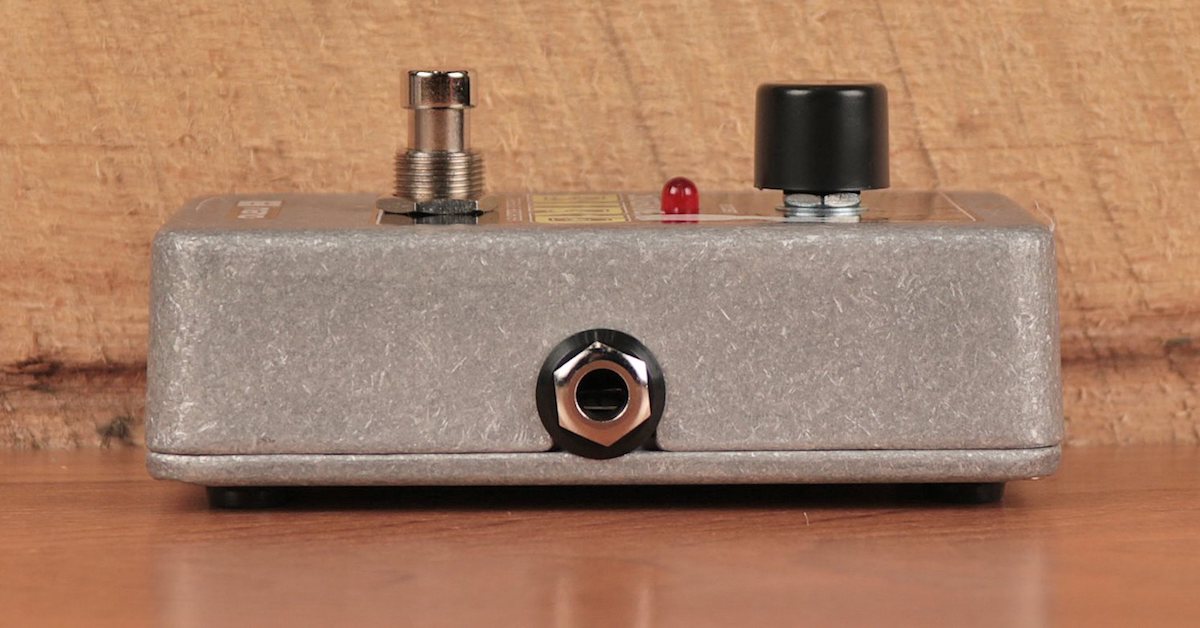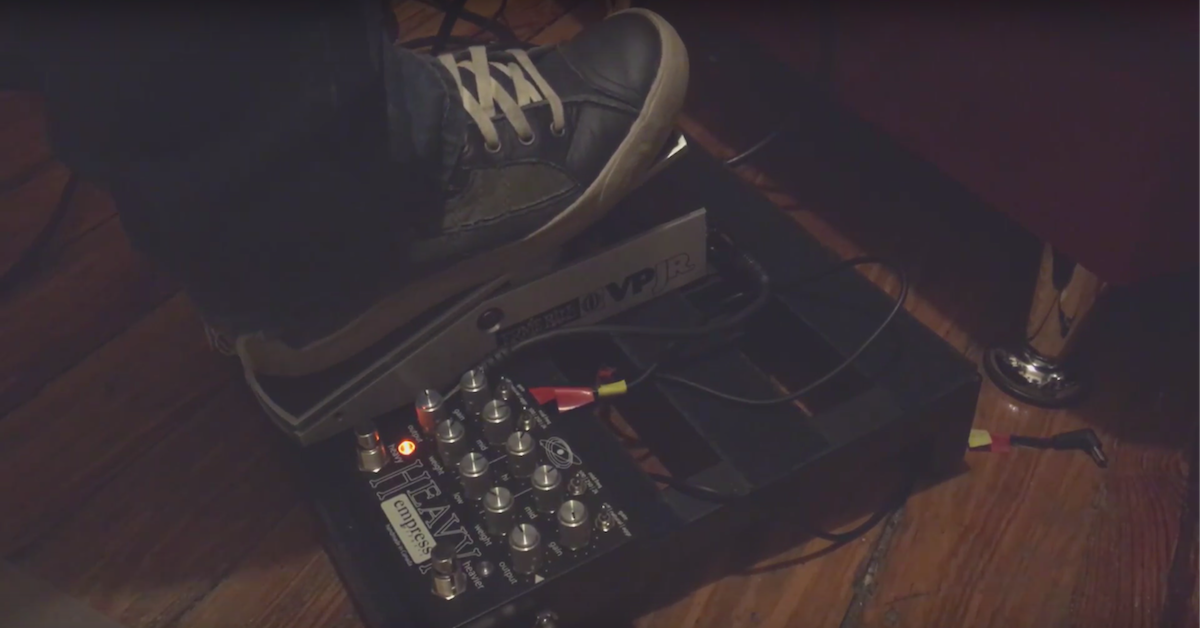Review: PLUS and PLASMA Pedals by Gamechanger Audio
Article Content
Last November at Synth Expo LA, I had a chance to try the PLUS and PLASMA Pedals from Gamechanger Audio, a Latvian-based company that is truly living up to its name. Last week at NAMM they introduced two new additions to their product line – a new Eurorack module created in collaboration with Erica Synths called PLASMA Drive, and a rack mount piece called PLASMA Rack. But before we get into what exactly these PLASMA effects do, here’s a look at their first offering called the PLUS Pedal.
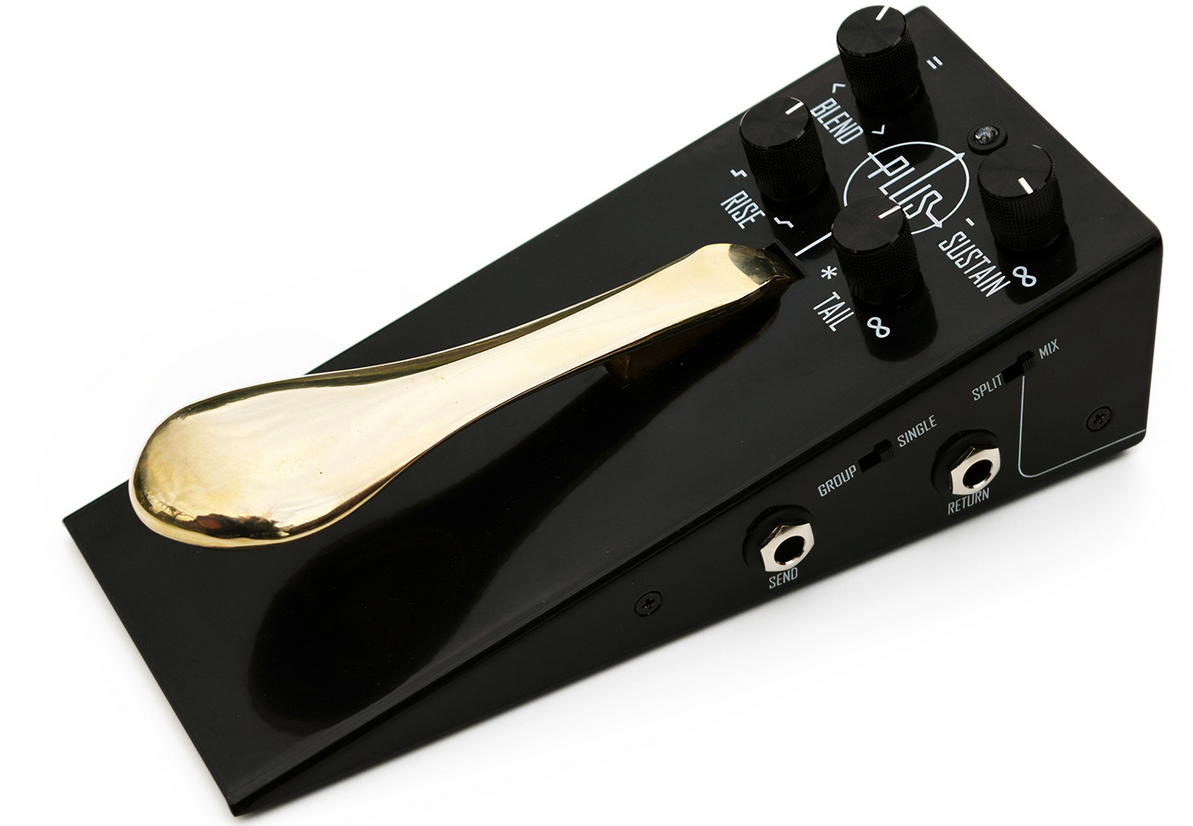
The PLUS Pedal
This elegant device that resembles and feels like a piano sustain pedal has received critical acclaim from day one. Its main use is to seamlessly sustain chords or tones while allowing the user to play over the top of the texture. One of the main problems in creating a sampling instrument is achieving a seamless looping sustain. There are FFT-based models that use spectral freezing techniques, reverb tail freezing, dual sample crossfading and granular-based solutions as well.
I have never been completely satisfied with the nature of these sort of sustained sounds in terms of retaining the character of the input sound and a transparent loop. But the algorithm developed by Gamechanger is capable of beautiful, lush sonorities that appear to be a natural outgrowth of the source instrument. It’s as if the input plants a seed that starts to propagate as the pedal is engaged. I first tried it with a typical clean American Strat sound, using the bridge and middle pickups. It was instantly satisfying as I was creating Strat-flavored chordal drones and began improvising above the texture.
The Concept
The developers suggest thinking of the device as if it were a “smart looper that only catches the last segment of your chosen note or chord, and uses it to create a continuous sound”. They distinguish their product from others stating:
Unlike existing granular synthesizers and synth-pad triggers, PLUS Pedal actually runs a constant Hi-Res recording of your instrument, and once engaged, the RealTime sampling algorithm instantly creates a circular micro-loop out of the most recent audio signal produced by you.
There is a slight learning curve to develop the right timing for engaging the pedal in relation to the onset of the source sound. To get a natural sustained sound there should be a delay between the attack of the input sound and pressing the pedal.
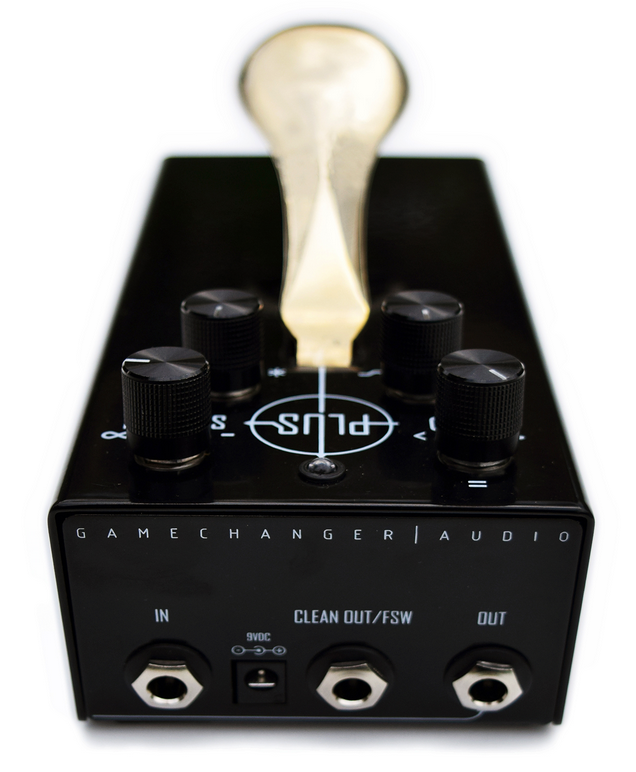
You can achieve a more distorted and synthetic type sound, more removed from the original source, by pressing the pedal closer to the attack of the input sound.
The Pedal also has a middle position that creates tones that are slightly muffled and lower in volume.
Main Controls
The main controls include:
BLEND – which is a wet/dry control
RISE – sets the fade-in speed of all new sustain layers
TAIL – adjust the spillover or release time once the pedal is released
SUSTAIN – a special control that changes functionality depending on the mode selected via the switch on the side of the device
- Single Mode – the SUSTAIN knob will adjust the sustain time from a minimum which emulates “the natural decaying properties of a ringing string – a gradual reduction in high frequencies.”
- Group Mode – the SUSTAIN knob will allow up to five active layers
There is a built-in FX LOOP which allows you to run the wet signal through additional effects such as tremolo, chorus, harmonizer, etc. This evokes limitless possibilities for playing with two discrete effects chains – one for the sustained sound and one for live playing.
The OUPUT can send and be set to send two types of signal via the Split/Mix switch – combined Wet/Dry and Wet only which is great for producing soundscapes and evolving textures.
The CLEAN OUT/FSW always sends out the Dry signal which can be controlled via an external footswitch (available as an additional purchase). This adds additional routing flexibility.
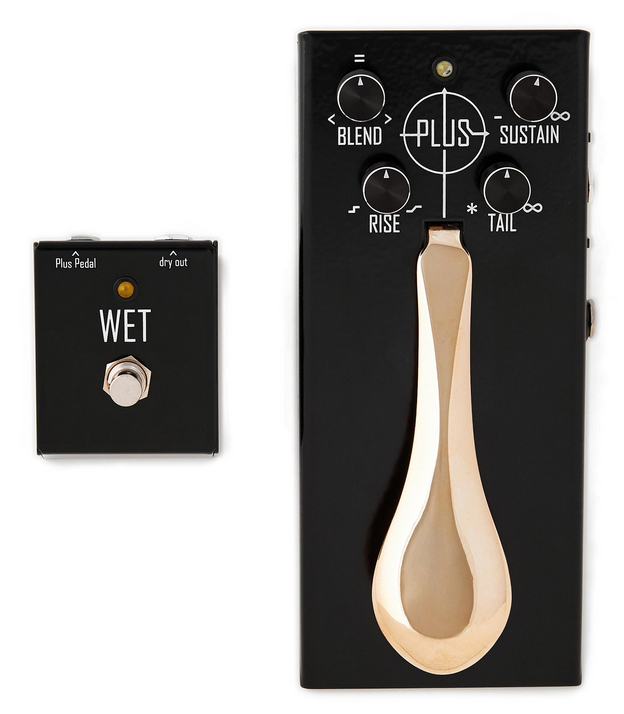
Other Sources
Using the PLUS Pedal for applications beyond guitar opens yet another rabbit hole. Synths and vocals can be routed through the PLUS given proper signal levels are provided by necessary pre-amping or line adjustments. I experimented with running the output of my Eurorack system through the PLUS pedal and was deeply impressed by the expanded textural palette I could access almost immediately.
The PLUS pedal is a solid build and is based on an elegant algorithm that delivers sonically gorgeous results. It has earned a permanent place in my signal chain unless you can pry it from my cold, dead hands.
The PLASMA Pedal
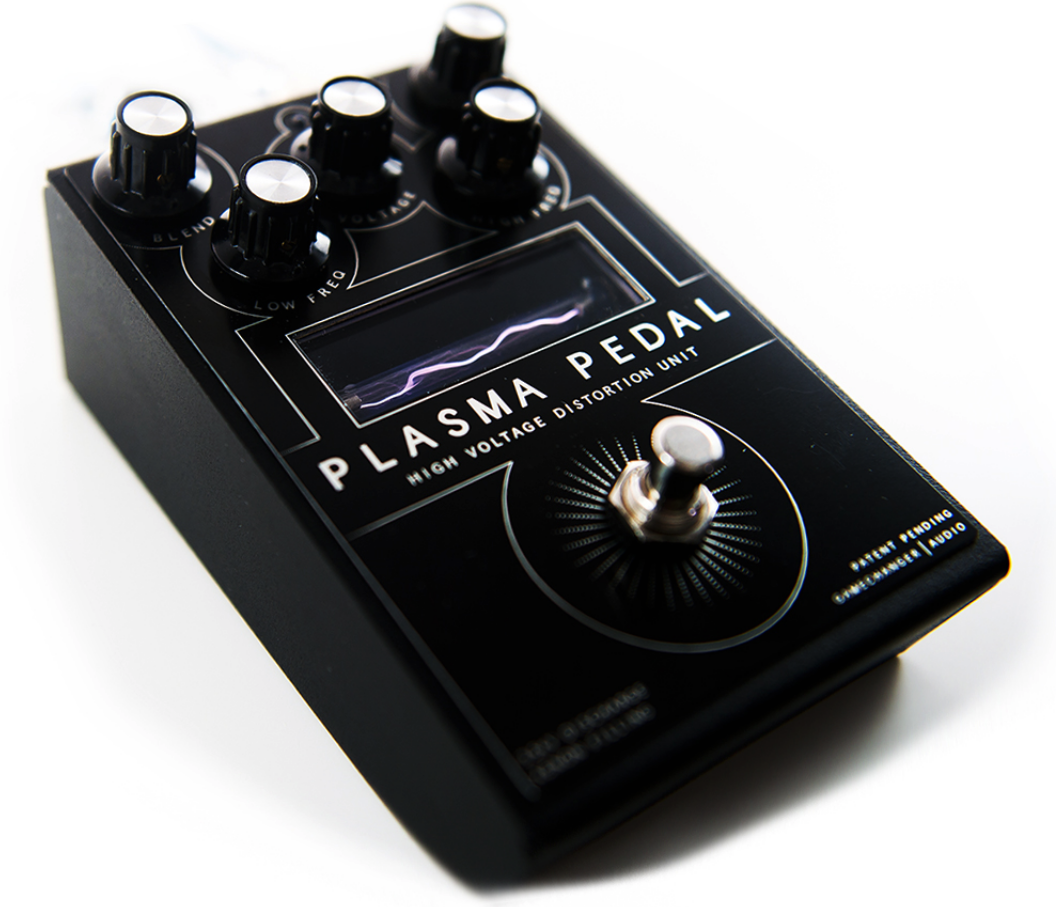
If the PLUS Pedal wasn’t innovative enough to convince you that the Latvian’s at Gamechanger must have access to excellent pharmaceuticals, then the PLASMA series of devices will surely close the deal. This thing sounds and looks like no other distortion pedal I’ve experienced before. And that’s saying a lot having just crawled to shore from the sea of pedals exhibited at NAMM last week. The developers describe the PLASMA process as high voltage rock n roll:
The PLASMA PEDAL is a revolutionary approach within the realm of overdrive and distortion, as it is a new and previously unexplored method of achieving signal clipping. Instead of using LED circuits, transistors or vacuum tubes to produce overdrive, the PLASMA PEDAL transforms your instrument’s live signal into a series of continuous high-voltage discharges within a xenon-filled tube. In essence – you are playing a bolt of electricity, and the electrical discharges produced by your instrument are instantly converted back into an analog audio signal, producing a quick, responsive, and extremely heavy distortion with TONS of unique character!
The process features a natural noise gate when the signal is 100% wet, because as you stop playing “the electrical discharge within the gas-filled time is interrupted” and the signal is stopped. The attack is really astounding and seems as fast as the speed of light. The sound is unabashedly angry with screechy harmonics, crackly electrical convulsions, and non-linear saturation.
The pedal “creates a new signal from fluctuations on the electromagnetic field that surrounds the gas-discharge tube.” One representative of Gamechanger told me the inspiration for the idea came while they were traveling around the US promoting the PLUS Pedal. They were imbibing somewhere in Tennessee one night when they noticed the crackling of a bug zapper positioned nearby. It is likely that the aforementioned pharmaceuticals had something to do with the connection the bug zapper had to guitar pedals, in the twisted minds of the developers. But the PLASMA Pedal was born and is now available in a Eurorack module (co-produced with Erica Synths – another Latvian-based company) and a rack mount version for the studio.
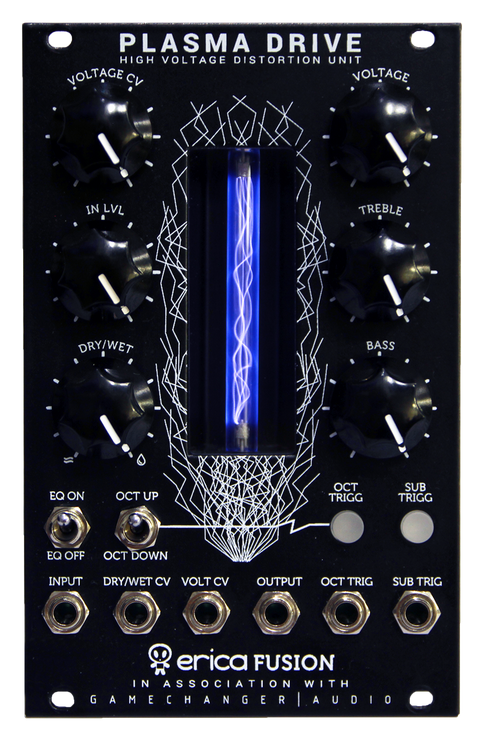

The Pedal Controls
BLEND – wet/dry control
VOLTAGE – controls “the amount of current sent to the xenon tube — increasing or decreasing the threshold necessary to achieve a discharge in the tube.”
VOLUME – output level
LOW FREQ and HIGH FREQ – extremely wide tone controls that can conceivably go well beyond the capabilities of the input source
CLEAN EQ – switch — determines whether the DRY Signal that you dial in with the Blend nob is affected by the pedals EQ section
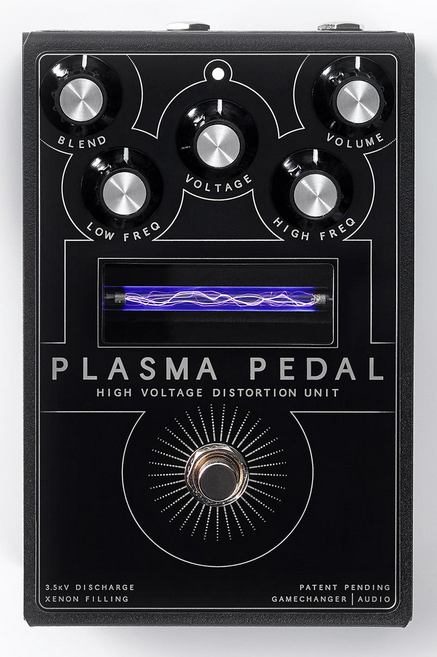
The Tesla-like visuals generated by the electrical flow through the tube make this device as fun to watch as it is to play. Although I haven’t tried the Eurorack version, I can only imagine the Frankensteinian fun you can have when you add CV (control voltage) and modulation into the mix.
As with any pedal, there is no reason to limit the input source to the guitar. Try it on bass, synth, vocals, percussion or literally anything that would benefit from the crackle and high voltage insanity generated by the PLASMA Pedal.
When I visited the Gamechanger booth at NAMM, there were developers in white coats like mad scientists, soldering circuits and actually working on a prototype of a new device they were unable to complete before the show. It uses three servo motors that are controlled by the output of a keyboard, where there is some relation between MIDI note number and RPM as far as I can discern. But when I asked if you could just plug in a guitar, one of the white coats did just that and the motors began to spin as well. I am very curious to see how this new device will turn out.
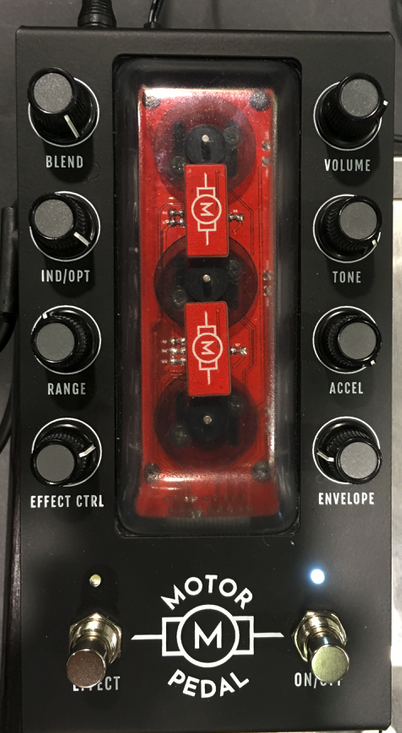
Conclusion
What all these ideas share is a physicality that goes well beyond twisting a knob or hitting a foot switch. With visual bolts of electricity, mechanical piano-style pedals, and spinning motors, Gamechanger Audio seems to have successfully raised the bar for innovation, an admirable feat given the already saturated boutique pedal market.
Check out my other articles, reviews and interviews
Follow me on Twitter / Instagram / YouTube



